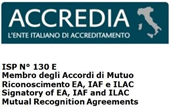HSE
CORPORATE POLICY ON HEALTH, SAFETY AND ENVIRONMENT
On the occasion of the assumption every technician is informed on two fundamental aspects concerning his safety and the safety of the population. Two aspects that differentiate the critical issues in radiographic checks on pipeline than any other site activities: the danger of the use of radiogenic substances/equipment and the criticality of pressures on artifacts whose ORAT inspectors are required to give judgement of suitability.
Our staff work, very often, at height or in confined spaces, ulterior motive that drives us to pay close attention to health and safety. During the 2015 ORAT technicians participated in 1800 hours of training related to safety at work. In 2016 we surmounts 2000 hours.
For each of our operators training continues throughout the work, as well as continue raising awareness in order to always be careful when using the correct DPI, in device management, in handling, transportation with vehicles, before, during and after activities.
Hence the importance, in ORAT safety bureaucracy of the radiation protection staff: the qualified expert, licensed doctor and dosimetric analysis laboratory work in synergy to ensure the safety of operations and monitor carefully the health of our radiologists.
Training, awareness and monitoring: these are the three pillars that over the years have dramatically reduced the number of accidents and their criticality. From 2014 to 2016 we have recorded only one accident with the loss of only 6 business days on over 400,000 man-hours worked.
ENVIRONMENT
We devote great attention to environmental protection; our management system is in accordance with ISO 14001. All our operators are participating, at the time of hiring and during their professional life, in training courses dedicated to the respect of the environment and its resources.
We are promoters of the increasing use of ultrasonic instead of radiography. With regard to pipeline, ten years ago the ratio of use of two methods was clearly biased for radiography (70% vs 30%). Today the ratio is reversed and automatic and semiautomatic ultrasonic are used in 80% of cases.
The functioning of all internal crawler used for inspection of pipes, is powered with sealed batteries. This reduces to zero the risk of emissions and spills of lead, sulfuric acid and thermoplastic polymers in the environment.
To ensure maximum environmental safety and to reduce emissions of carbon monoxide, we replace our corporate fleet vehicles every three years.
With regard to waste disposal, we carry out an extensive and careful harvesting system that conveys wastewater of radiographic development in the major nodes of the territory, before being picked up by professional disposal. To this end we have selected only those companies that have exceeded the highest safety requirements and environmental care.

